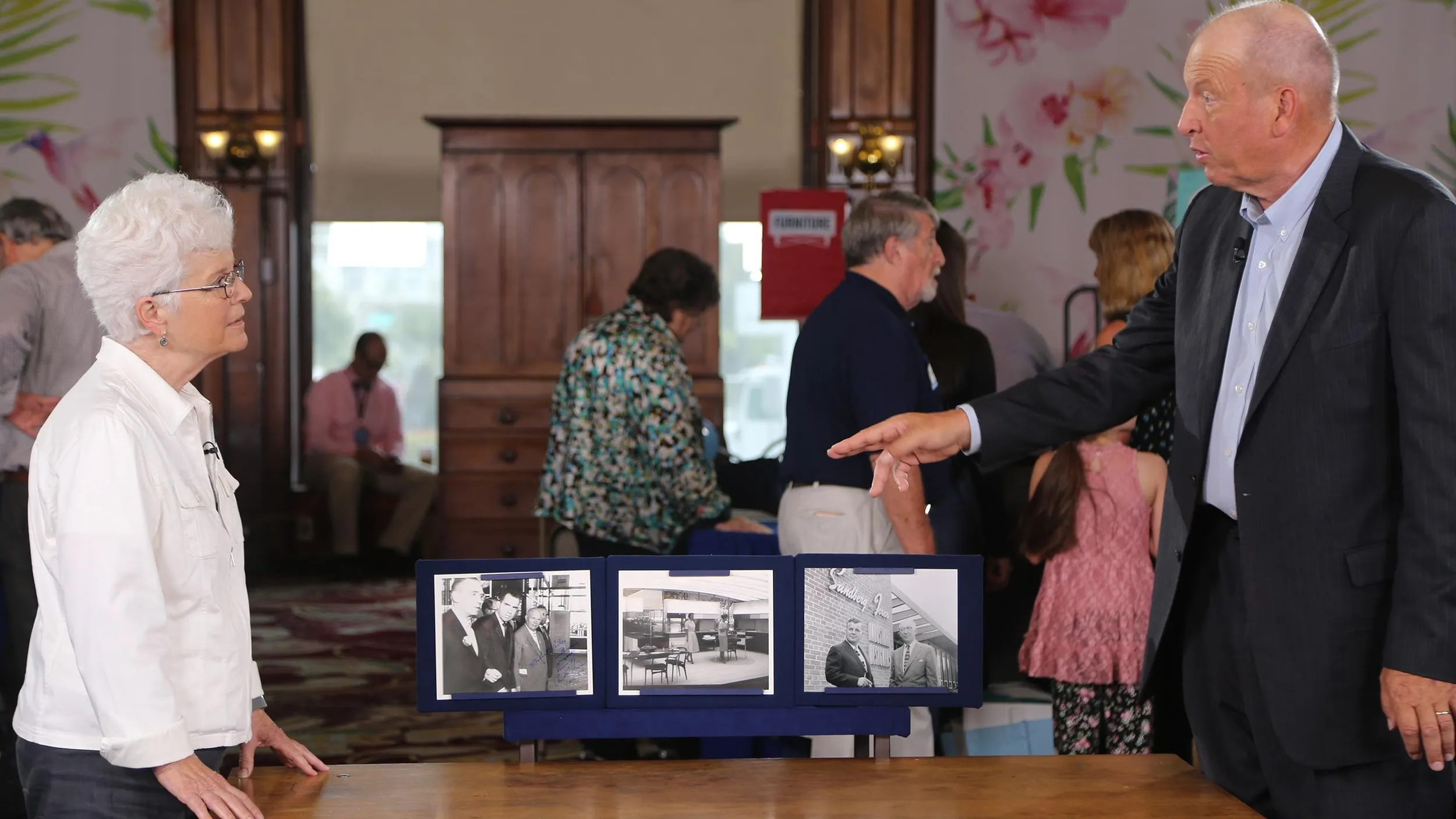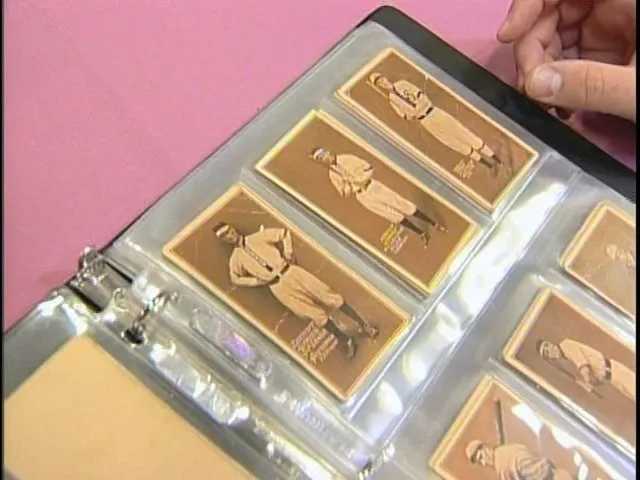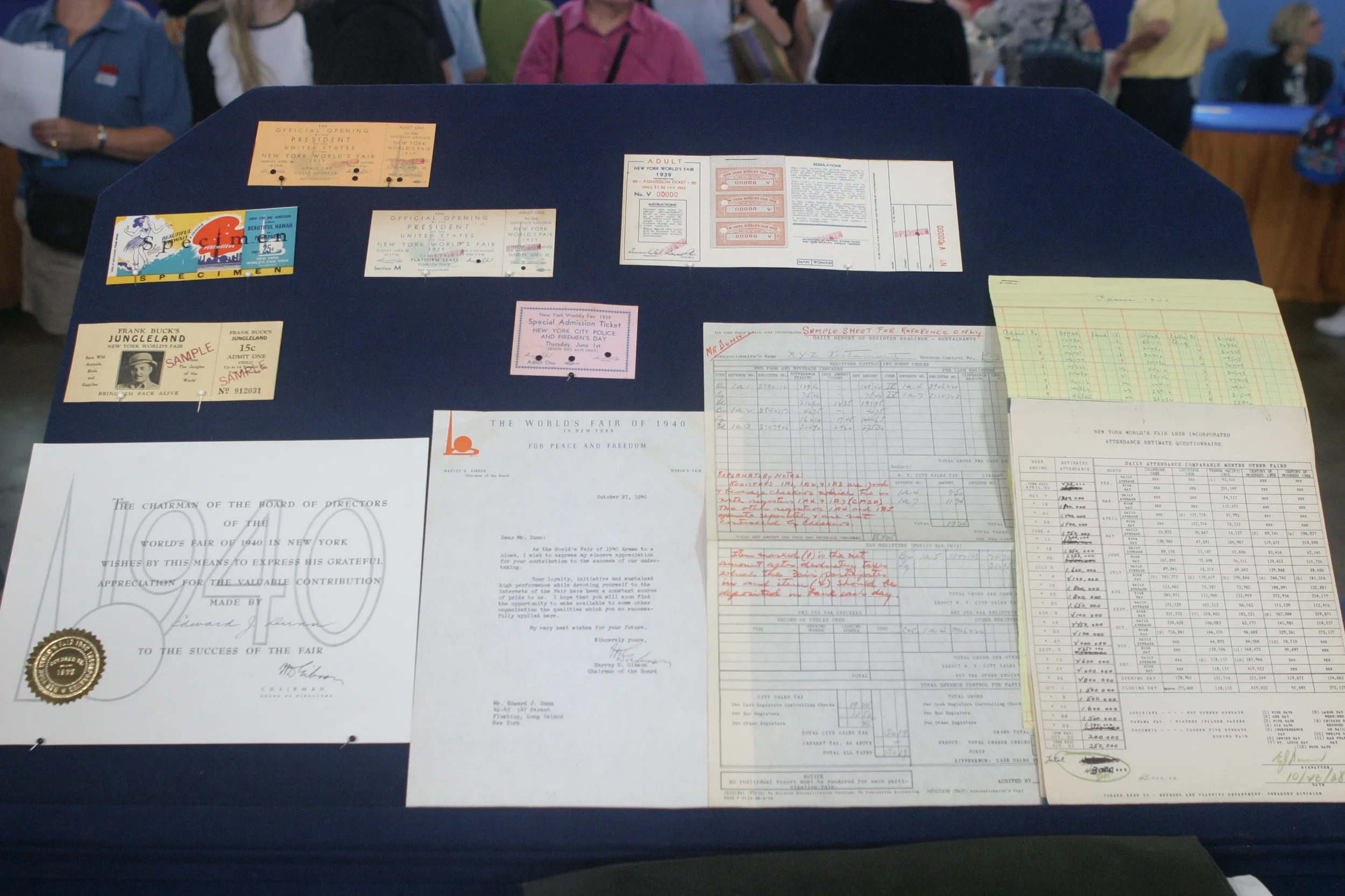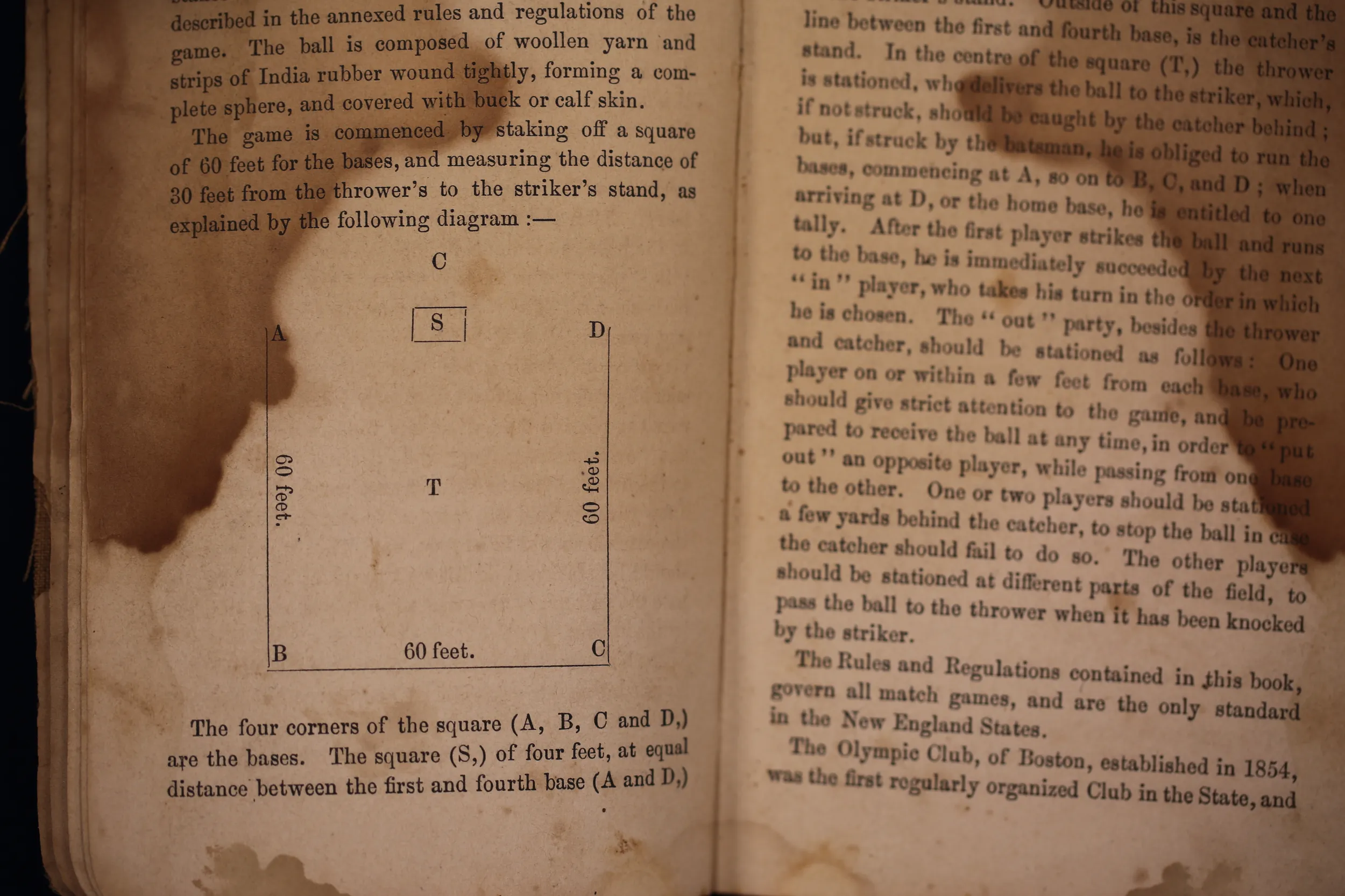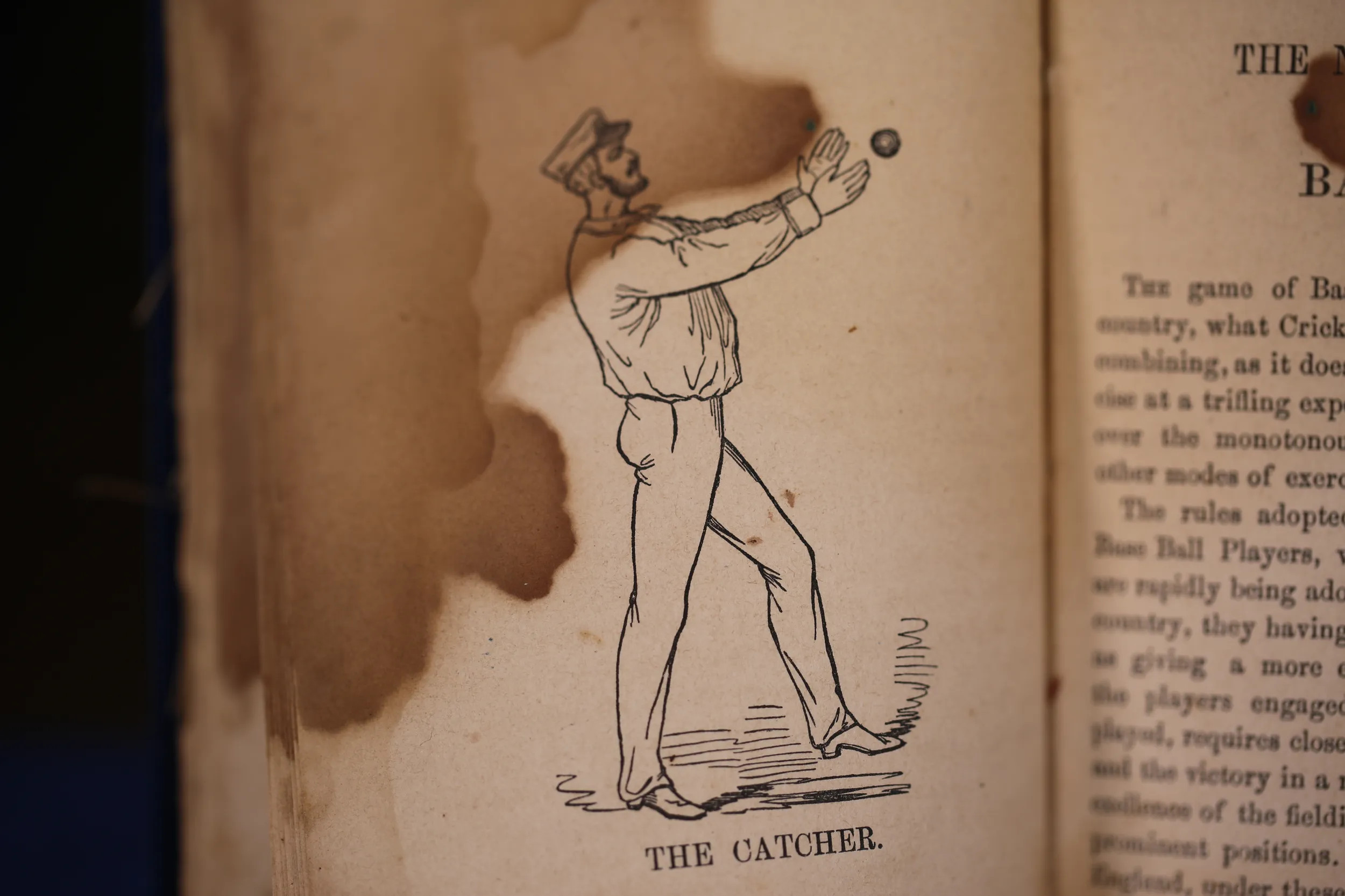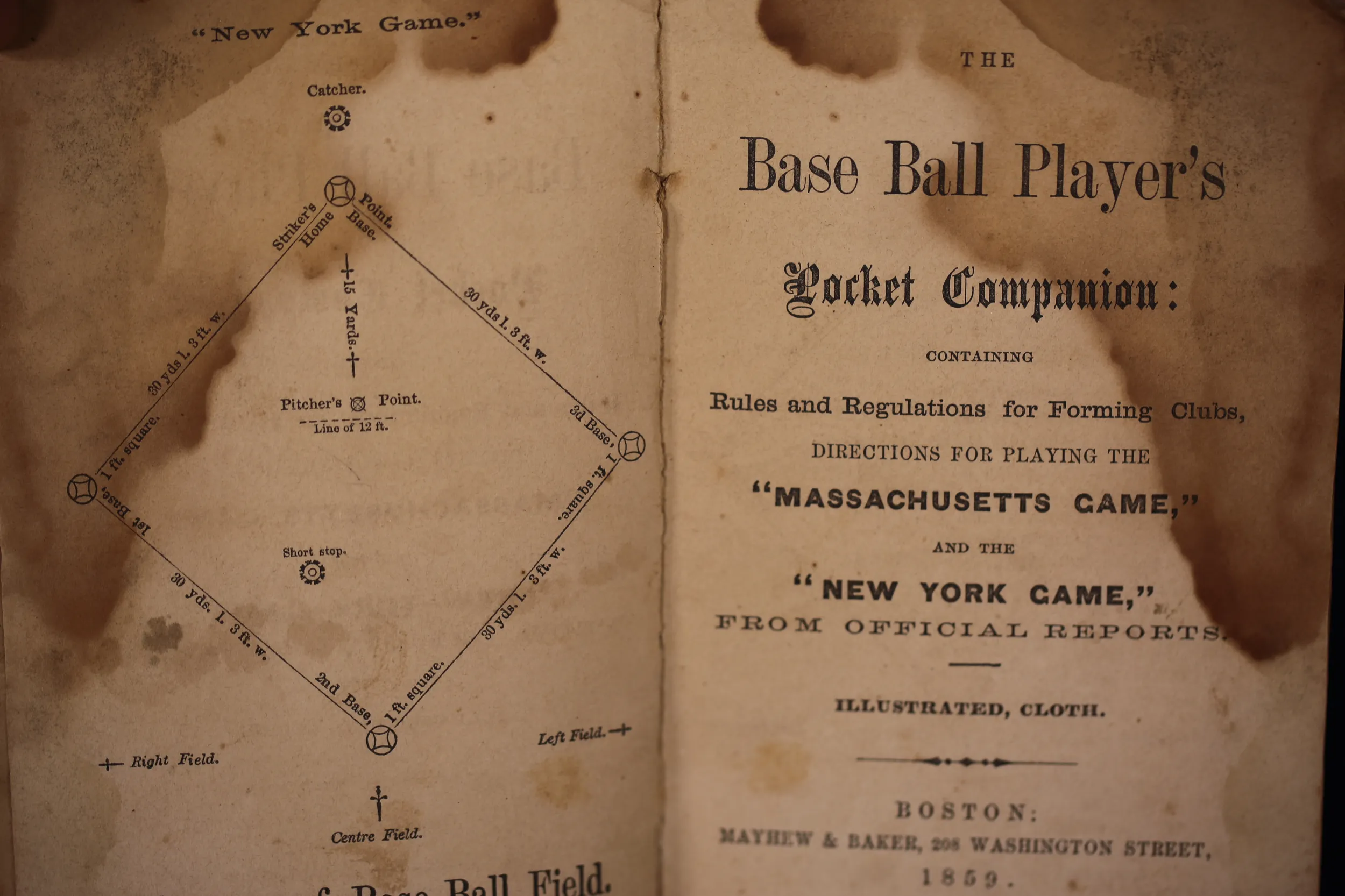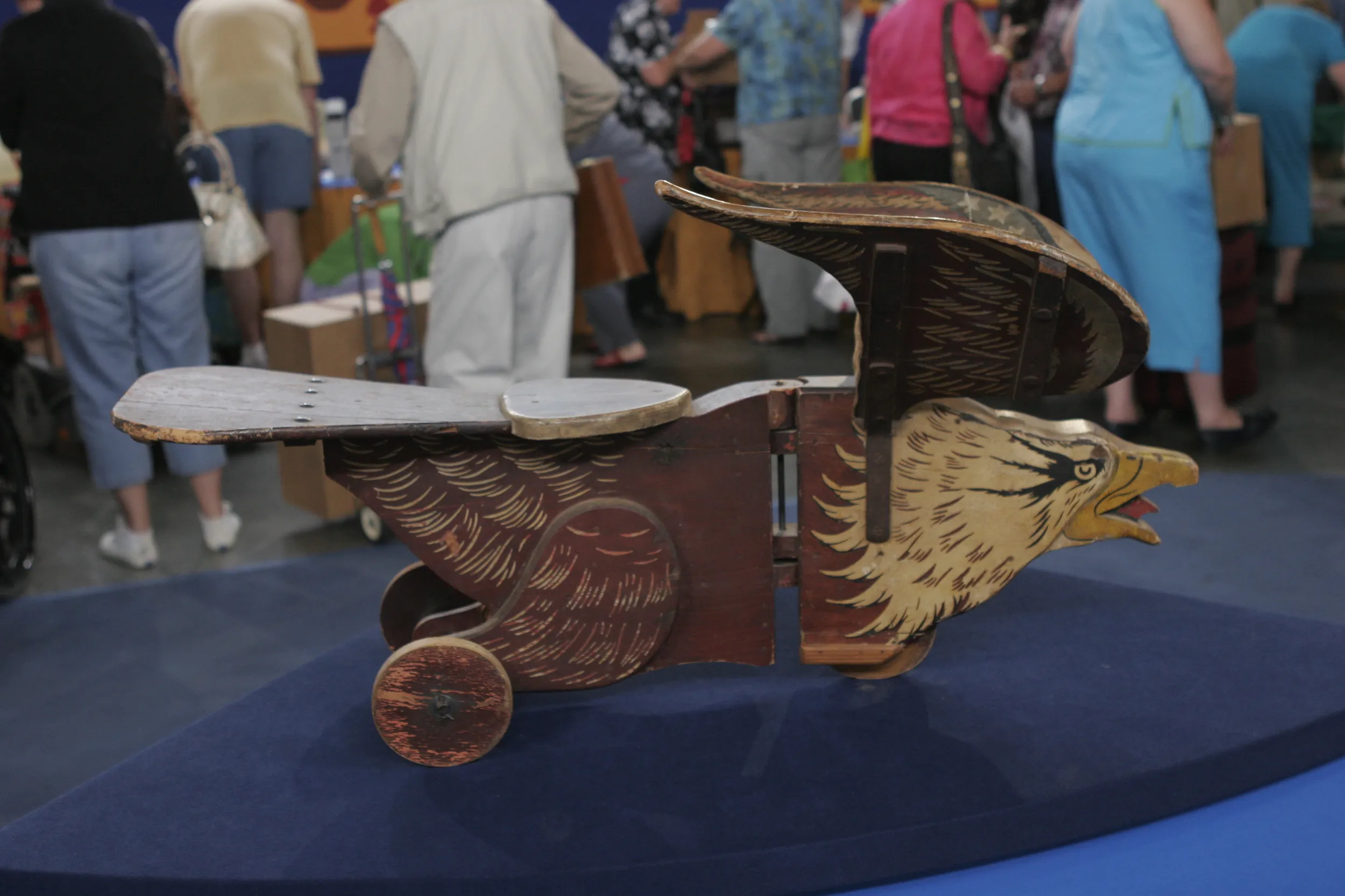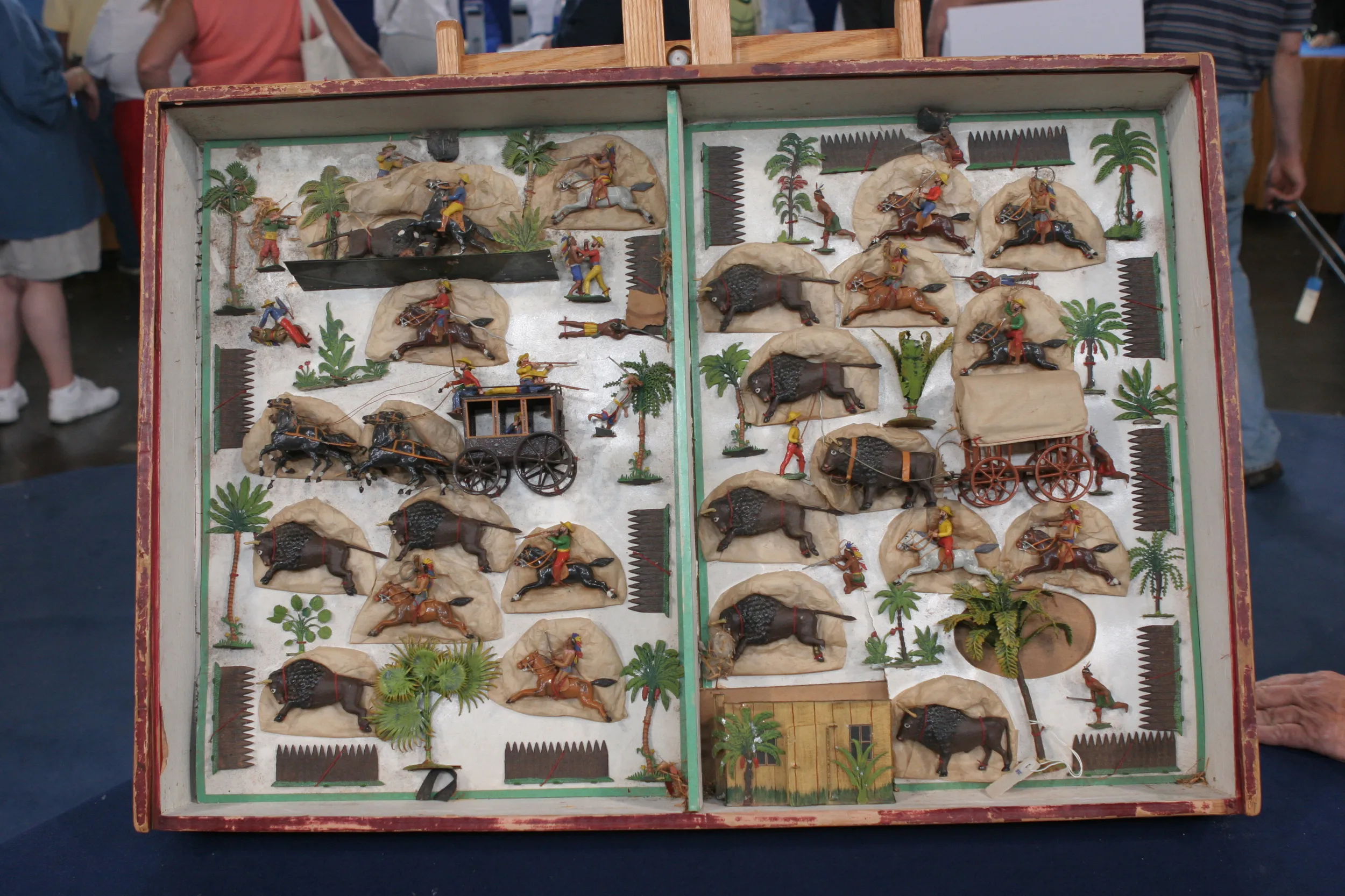APPRAISER: Tell us how you got this great baseball player's pocket companion.
GUEST: Well, I don't think it's very pretty, but... But my husband, 20 years ago, purchased a storage locker. He paid $200 for the whole storage locker. There were some books in there, and they were old baseball books from, like, the early 1900s. This was in there. Unfortunately there was a leak in the storage locker that this book was in, and it did get water-damaged. But we thought it was still worth keeping, and we have it in our collection, so...
APPRAISER: And how long ago was that?
GUEST: About 20 years ago.
APPRAISER: And so, and so why did you keep it?
GUEST: Just, my husband is an avid baseball card collector, and we just... I love buying him old judges' cards and old tobacco cards. And so it's just among one of the souvenirs.
APPRAISER: This is considered by historians and collectors to be the most important early baseball book.
GUEST: Wow! That's exciting, yeah.
APPRAISER: The most. And why is that? Because this was a book from 1859 that was carried by the players for the rules and regulations.
GUEST: (gasps) I wonder who carried it back then, yeah.
APPRAISER: Absolutely. So why would they have carried this, right?
GUEST: Yeah.
APPRAISER: That's the question. And yet there are less than ten known to exist.
GUEST: Wow.
APPRAISER: Let's go back to the history of baseball.
GUEST: Yep.
APPRAISER: One of the first mentions of baseball was in Pittsfield, Massachusetts, in 1791.
GUEST: Wow!
APPRAISER: And it was mentioned because there was an ordinance preventing baseball from being played within 80 yards of the meeting house.
GUEST: (laughing) That's amazing.
APPRAISER: I guess they were breaking windows, even in those days.
GUEST: Yeah. And I think the first baseball games were played where they had to throw the ball at the guy to get him out. That's how they got out.
APPRAISER: That's absolutely right. That brings us to this book.
GUEST: Oh, okay.
APPRAISER: Because this book was a book that was carried by players in order to remember the rules and regulations. Well, why would they have to? Because baseball evolved from Massachusetts, becoming a major sport in the Northeast. And it was played in Massachusetts, New York, New Jersey, and Philadelphia, primarily.
GUEST: Right, right.
APPRAISER: And there were two sets of rules. There were the Massachusetts rules, which we have right here...
GUEST: Wow.
APPRAISER: And there were also the New York rules. And we're talking, again, the early to mid-1800s.
GUEST: Yeah.
APPRAISER: So here's the Massachusetts game. Now, this doesn't look anything like today's game, right?
GUEST: No, no, it doesn't.
APPRAISER: So we have a square here. And here's where your batter or striker would be, here's where your thrower would be, and here's where your catcher would be.
GUEST: Okay, wow.
APPRAISER: Now, you would hit the ball, and here you would have your A base, your B base, your C, and you would finally score when you got to D.
GUEST: Oh, wow, okay.
APPRAISER: We have 60 feet, not 90.
GUEST: Okay, yep.
APPRAISER: And these were not bases, they were stakes. So you would touch the stakes.
GUEST: Wow! Okay.
APPRAISER: We're going to go back here to our first tab. This is the New York game. New York started becoming the epicenter of baseball in the 1850s. And this is
GUEST: That’s awesome.
APPRAISER: the New York set of rules, the New York diagram. This is what, is much more what we're used to today.
GUEST: Yeah, right, right.
APPRAISER: So we've got a diamond shape.
GUEST: Yep.
APPRAISER: And we've got 90 feet.
GUEST: Yep.
APPRAISER: And we've got bases. So in 1859, they produced this book,
GUEST: Yep.
APPRAISER: and they did in 1860 and '61. We don't see any after that, largely because of the Civil War.
GUEST: Oh, yeah.
APPRAISER: Now, the Civil War had a double impact. Believe it or not, it did grow the game exponentially, because it was played in a lot of army bases, both in the South and in the North. And it grew to be a truly national game, and actually ended up extending to the West Coast.
GUEST: Right.
APPRAISER: So Massachusetts went by the wayside. The New York rules basically stood until today.
GUEST: Right.
APPRAISER: You did mention, and we'll go back here, you do see...
GUEST: Water damage.
APPRAISER: We have the water damage. And that's virtually on every page, and that does make a difference.
GUEST: I'm sure it does.
APPRAISER: How much did you think it was worth?
GUEST: I said maybe, maybe $300, because of the water damage.
APPRAISER: I would place an auction estimate probably in the $4,000 to $6,000 range.
GUEST: Wow! That's amazing! Woo-hoo! I wish he was here. I would give him a big hug and a kiss. I love you, honey. Oh, that's very cool.
APPRAISER: And if there wasn't any water damage, I would probably put an auction estimate of $8,000 to $10,000 on it.
GUEST: Wow.

